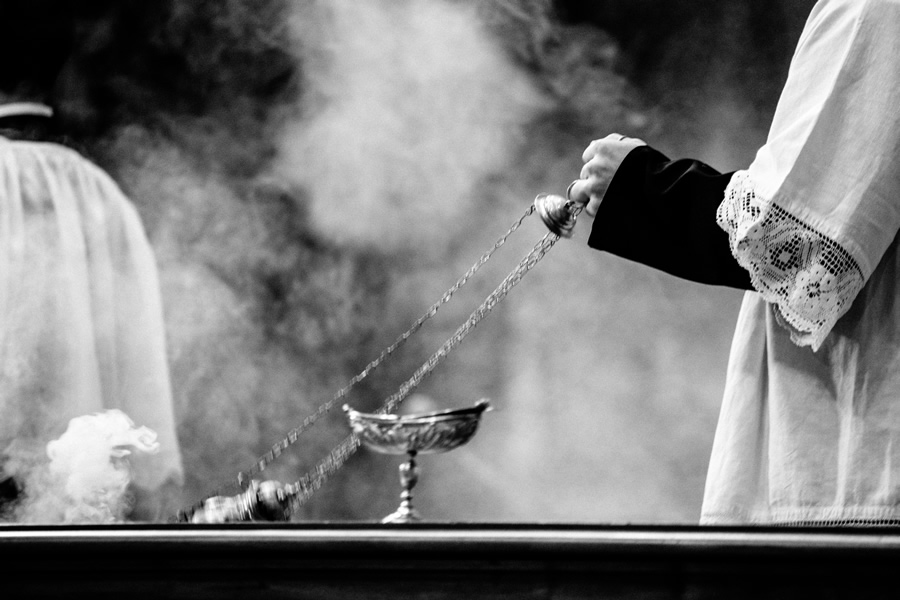
Importance of Incense in Catholic Worship
12-05-2021Weekly ReflectionBernadette Linde, Director of Liturgy & MusicIncense has become a polarizing topic in the Church. Some love it, some hate it, very few are indifferent. But why do we use incense during Mass and why have we for centuries?
The use of incense in the liturgy is an important element for liturgical, theological, and historical reasons.
- Liturgically, incense is used as an honorific gesture of purification and sanctification.
- Theologically, the use of incense is a symbol of the prayer of the faithful rising to heaven. This is connected to Psalm 141:2: “Let my prayer be directed as incense in thy sight: the lifting up of my hands, as evening sacrifice.” In the Book of Revelation, incense is the symbol of the prayers of the saints in heaven: “Each of the elders held a harp and gold bowls filled with incense, which are the prayers of the holy ones.” (Rev. 5:8) and “Another angel came and stood at the altar holding a gold censer. He was given a great quantity of incense to offer, along with the prayers of all the holy ones, on the gold altar that was before the throne” (Rev. 8:3).
- Historically, the use of incense is rooted in early Jewish traditions. The practice traces back to the time of the Second Jewish Temple/Second Temple period, which was between c. 516 BCE and c. 70 CE.
Olfactory qualities also play a large role in the use of incense. The scent draws us in to a mindset of sacredness. Each time we smell it we are reminded that we are in prayer. Some churches even use different scents for each liturgical season, setting the tone of the season along with the liturgical colors, music, and texts.
The General Instruction of the Roman Missal (GIRM) states that incense may be used during the entrance procession; at the beginning of Mass to incense the altar; at the procession and proclamation of the Gospel; at the offertory, to incense the offerings, altar, priest, and people; and at the elevation of the Sacred Host and chalice of Precious Blood after the consecration. The crucifix and Paschal candle may also be incensed by the priest. Incense is also used at Vespers, Evensong, funerals, and benediction and exposition of the Blessed Sacrament. During Holy Week it is used on Holy Thursday and at the Easter Vigil.
While it may not be everyone’s favorite thing, incense has deep roots in the Church and serves as an important symbol of prayer, honor, purification, and sanctification. In being mindful of those who are physically intolerant of it, we must be sensitive both to the comfort of parishioners as well as to the important legacy of our symbols and traditions.
BACK TO LIST